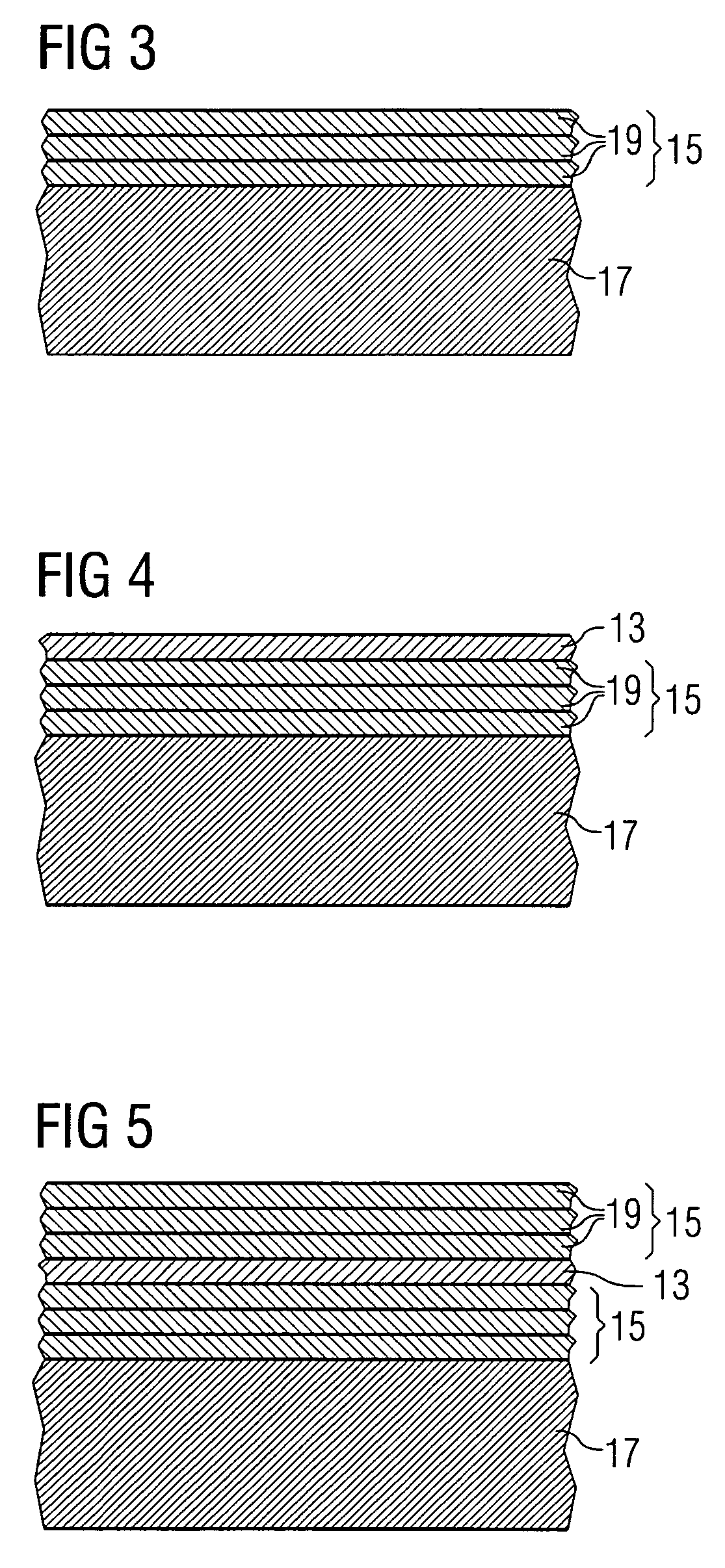Method for producing fibre reinforced laminated structures
a technology of fibre reinforced laminates and fibre reinforced sheets, which is applied in the field of fibre reinforced laminate production, can solve the problems wrinkles in the laminate structure, etc., and achieve the effects of high permeability, reduced risk of delamination and air pockets, and increased wetting
- Summary
- Abstract
- Description
- Claims
- Application Information
AI Technical Summary
Benefits of technology
Problems solved by technology
Method used
Image
Examples
Embodiment Construction
[0034]FIG. 1 is a schematic view of the cross-section of a laminated wind turbine rotor blade 1. The rotor blade 1 is made of an upper shell 3 and a lower shell 5 each comprising a thickened section 9 and non thickened sections 11. The upper and lower shells 3, 5 comprise a number of fibre reinforcement layers which are not individually shown in the figure. In the thickened section 9 the number of reinforcement layers is increased with respect to the non-thickened sections 11.
[0035]The thickened section 9 of the upper shell 3 is shown in more detail in FIG. 2. In the thickened section 9, flow-enhancing layers 13 are present between stacks of fibre reinforcement layers 15. The fibre reinforcement layers 15, as well as the flow-enhancing layers 13, are embedded in a resin matrix which has been formed by resin infusion and subsequent curing of the resin. During the infusion process the flow-enhancing layers 13 layered between neighbouring stacks 15 of the fibre reinforcement layers ens...
PUM
| Property | Measurement | Unit |
|---|---|---|
| Thickness | aaaaa | aaaaa |
| Flow rate | aaaaa | aaaaa |
| Permeability | aaaaa | aaaaa |
Abstract
Description
Claims
Application Information
 Login to View More
Login to View More - R&D
- Intellectual Property
- Life Sciences
- Materials
- Tech Scout
- Unparalleled Data Quality
- Higher Quality Content
- 60% Fewer Hallucinations
Browse by: Latest US Patents, China's latest patents, Technical Efficacy Thesaurus, Application Domain, Technology Topic, Popular Technical Reports.
© 2025 PatSnap. All rights reserved.Legal|Privacy policy|Modern Slavery Act Transparency Statement|Sitemap|About US| Contact US: help@patsnap.com



